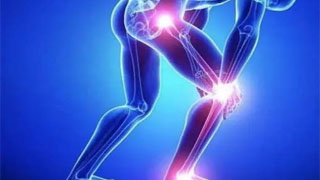
What is quadriceps pain?
Quadriceps pain can be caused by various reasons, including overuse, strains, direct trauma, muscle imbalance, and potential medical conditions. Athletes, especially those involved in repetitive leg movements or sudden changes in direction, are particularly susceptible to quadriceps injuries.
In addition, people who engage in activities that excessively strain the quadriceps muscles (such as weightlifting or sitting for long periods of time) may also feel discomfort or pain in that muscle group.
Reasons for quadriceps pain
contusion
When severe direct impact or trauma affects the quadriceps muscle, usually during exercise or falls, contusions can occur. This will compress muscle fibers and blood vessels, causing bleeding (hematoma) in the surrounding tissues. The rectus femoris muscle is most susceptible to injury because it is closest to the ground.
As blood accumulates, swelling and inflammation can compress nerve fibers, causing pain. As hemoglobin decomposes, color will also appear within 1-2 days. The injured area feels stiff, tender, and painful, especially when walking, contracting the quadriceps, or palpating the thigh. Complete recovery takes between 10 days and 6 weeks, depending on the size of the contusion. The correct treatment includes resting, applying ice, applying pressure, and keeping the legs elevated.
Muscle strain
The severity of acute bacterial strains is divided into three levels.
Grade 1 strain excessively elongates muscle tissue without tearing. During the contraction period, discomfort may occur, but the strength remains unchanged. Conservative treatment can cure the strain within about 2 weeks.
Level 2 indicates partial tearing of muscle fibers, accompanied by local weakness, swelling, and loss of function. Through appropriate rehabilitation treatment, healing takes approximately 4-8 weeks.
Grade 3 strain is a complete tearing or rupture of a muscle, resulting in the knee joint being completely unable to stretch. These require surgical closure of the detached tissue ends prior to a long-term, progressive rehabilitation plan.
If there is no careful prevention strategy, all strains will increase the likelihood of future injuries.
Chronic quadriceps tendon problem
Repetitive strain caused by overuse can lead to painful inflammation of the patella or quadriceps tendon, known as tendinitis. Micro tears can cause swelling, irritation, and fever around the tendon. Activities involving repeated jumping can generate significant shear stress on these tissues.
In addition, long-term tendon wear can lead to tendon degeneration or degeneration. This manifests as pain in the anterior part of the knee joint, stiffness after rest, and loss of flexibility. The customized reinforcement and flexibility plan aims to repair damaged tendons. Platelet rich plasma or stem cell injection can also alleviate inflammation. For stubborn cases, surgical debridement remains an option.
Tendon rupture
Sudden strong contraction of the quadriceps muscle against resistance may lead to complete rupture of the patella or quadriceps tendon. This situation usually occurs when the foot falls and both hands grab onto the thighs in an attempt to break the ground. There are still obvious defects left in the torn area.
If surgical repair is not performed, the knee joint extension function will be permanently lost. The surgery tightly sutures the torn end, allowing for a protected load, and then gradually recovers. Performing anatomical repair before retraction and scar formation can achieve good results. Timely repair can enable athletes to ultimately resume exercise after their strength and flexibility have been fully restored.
Treatment plan for quadriceps pain
Acute phase
After quadriceps contusion, strain, or tendon injury, the initial treatment focus is on the RICE regimen - rest, ice compress, compression, and elevation:
Strictly rest and avoid engaging in sports activities that can exacerbate pain
Ice compress for 20 minutes every 2-3 hours to reduce inflammation
Elastic wrap compresses and supports the thighs
Keep the legs above the level of the heart to limit swelling
medicine
Oral nonsteroidal anti-inflammatory drugs (ibuprofen, naproxen) can alleviate discomfort and inflammation
Acetaminophen is used to treat mild quadriceps strain
External anti-inflammatory drugs can alleviate symptoms of tendinitis
Cortisone or PRP injection can treat chronic tendinopathy
rehabilitation training
Under the guidance of a physical therapist, once the initial pain subsides, start exercising:
Gentle range of motion
Progressive reinforcement plan (equal length → concentric → eccentric)
Stretching and tightening the hip flexors, quadriceps, iliotibial tract, and calves
If the patellar tendon is affected, perform patellar loosening
Water training is beneficial during the recovery period
Physical therapy options
Thermal therapy:
Applying hot compress to the affected area can help relax muscles and relieve pain. Hot compress bags or towels can be used for this purpose. Be careful when using thermal therapy to avoid burns or excessive heating.
Cold therapy:
Cold therapy, also known as cryotherapy, can help reduce inflammation and swelling. Apply ice packs or cold compress to the affected area several times a day, for 15 to 20 minutes each time. However, preventive measures must be taken to prevent frostbite, such as wrapping the cold compress bag with a towel before applying it to the skin.
Massage:
Massage therapy is beneficial for relieving muscle tension and promoting blood circulation in the quadriceps. Certified physical therapists can apply various techniques, such as deep tissue massage or trigger point massage, to address discomfort in specific areas.
Ultrasonic therapy:
This type of therapy involves using high-frequency sound waves to penetrate deep into tissues, promoting healing and reducing pain. During ultrasound treatment, gel is applied to the skin and special equipment is used to emit sound waves.
Stretching exercise
Lunge hip flexion muscle extension
Stretching the hip flexors with lunges can elongate the tense hip flexors, which often leads to excessive tension in the quadriceps and anterior knee pain.
Stand alternately, one leg forward and one leg backward
Keep the torso upright and exercise the core muscles to avoid excessive arching of the lower back
Move your hips forward until you feel a slight stretch in the front of your hind legs
Maintain this gentle stretching movement for 30 seconds
Repeat 2-3 times for each leg
Its target is the iliopsoas muscle and the connecting fascia band around the thigh. Stretching should produce a slight tension, rather than pain that may indicate tissue damage.
Standing quadriceps stretching
Stretching the quadriceps while standing can isolate the rectus femoris and quadriceps femoris muscle groups.
Maintain balance near the wall with one hand, bend your knee and grab your ankle
Gently pull the heel towards the gluteal muscles until a slight stretch is felt in the front of the thigh
Avoid jumping or excessive stretching, as this may exacerbate muscle strains
Maintain for half a minute, release, repeat once or twice.
To recover from the strain, keep the knee slightly bent to avoid applying excessive tension to the healing muscle fibers. This is beneficial for liquidity without hindering the regeneration process.
Regular and gentle stretching exercises can help maintain flexibility and accelerate the recovery of various types of quadriceps pain. Always monitor the level of pain and adjust the position accordingly.
Strengthening quadriceps exercises
Static quadriceps exercises (SQE):
Sit down, bend your knees 90 degrees, and place your feet flat
Tighten the quadriceps and push the back of the knee downwards
Knee fully extended, hold for 5 seconds
Feeling tension in the front of the thighs
Afterwards, relax your muscles and bend your knees
Repeat 10 times, rest between groups
Complete 2-3 groups, with 10 sessions per group
Make progress by adding resistance bands
Perform 2-3 times a day during the early stages of rehabilitation
Safely establish initial quadriceps strength
Medial oblique muscle or VMO:
Bend the affected knee 90 degrees when sitting down
Place the ball/rolled up towel under the knee
Straighten your knee and press the back of your knee into the ball
Knee tilt inward with VMO as the target
Keep contracting for 5 seconds
Feel the deep burning sensation on the inner thigh
Return to the starting position
Complete 10-15 repetitions
Rest; Repeat 2-3 sets
Improve by increasing ankle weight
Squat against the wall:
Back against the wall, feet shoulder width apart.
Bend your knees 90 degrees and slide down from the wall.
Maintain a squatting position for 5-30 seconds
Mobilize core strength, keep hips level and place weight on heels
Push the wall backwards until standing
Repeat 10 times, 2-3 groups
Partial squat:
When standing, the distance between the feet is greater than the distance between the hips
Start a deep squat by pushing your hips backwards
Reduce by half and stop above the parallel line
Push the heel back to the starting position
Keep knees above toes
Repeat 10 times, 2-3 groups
Knee to chest:
Lie down and bend one knee to the chest
Grasp the thigh below the knee
Gently pull your knees closer to your torso
I feel a stretch in front of my thighs
Maintain for 30 seconds
Relax your legs and come back
Repeat 2-3 times for each leg
Help prevent quadriceps pain
Strategies for dealing with injuries:
Warm up and relax
Before exercising, it is important to warm up appropriately - by walking/jogging lightly and stretching the quadriceps muscles, gently preparing the tissues.
Cooling down through low-intensity exercise can stimulate blood circulation, thereby eliminating lactic acid and waste accumulation that may cause soreness.
Train with appropriate intensity and frequency
Avoid aggressive training in terms of intensity or duration, as this can lead to fatigue accumulation, increased likelihood of injury, and overuse syndrome.
Adequate rest between exercise days can maintain recovery ability and prevent tissue overload and breakdown.
Combining flexibility and reinforcement exercises
Stretch the quadriceps, hip flexors, and calves to maintain the required muscle length and stretchability for transmitting force.
Strengthening muscle groups through changes in movement to distribute joint load, rather than burdening a particular area.
Support appropriate biomechanics
Use orthotics/insoles to address issues of excessive internal rotation and alignment abnormalities that impose additional loads on the quadriceps muscle.
Check and correct posture, running or squatting posture. Incorrect mechanics can increase the pressure on the knee extensor muscles.
Wear appropriate equipment
Ensure that the shoes fit snugly and provide sufficient stability and cushioning. Change sports shoes every 300-400 miles.
Sometimes it is recommended that patients with anterior thigh tendinopathy and patellofemoral joint disease use knee pads to improve patellar trajectory and reduce load.


